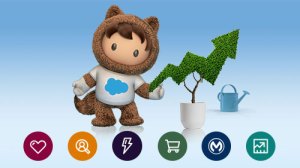There is a lot of talk today about digital transformation.
We know it delivers compelling outcomes, such as improved efficiency and greater profitability, but the term itself is used too broadly or vaguely. There is no useful checklist for organisations to reference to calibrate their digital transformation maturity.
In this blog, I try to address this by providing a simple prescriptive framework so anyone can embark on this journey.
Digital transformation is the art and science of transforming your technology landscape to influence powerful business outcomes, which plays out in the topline and bottomline of your company’s financial statements. Digital transformation should be relevant to your customers’ needs since it is closely linked to business objectives. And for this reason, digital transformation is all about customer experience.
Organisations that have recognised this are forging ahead. They are digitally transforming their processes to enable the customer to place orders online, reach out 24×7 on a channel of choice and access prompt, contextually relevant service. This is translating into a speedily expanding customer base as well as topline and bottomline growth.
The pandemic has only accelerated this trend and companies that do not come on board will be left behind.
The questions to ask ourselves then, are: Where do we stand right now? How do we kick-start our digital transformation journey? And how do we leverage the benefits?
This can be accomplished in three steps.

Step 1: Connect
Using technology to connect with your customer is the first step of a complete digital transformation. For this, you need a system that will help you capture every single piece of information about your customer.
In increasing order of automation, the solution you build has to meet the following criteria:
- It needs to be cloud-enabled and portable. This ensures that it can be used anywhere, anytime and on any device to gather customer information on the go.
- Information about your customers is probably spread across multiple systems such as order management, billing, ERP, and UIDAI. Your solution should be able to easily integrate with these external and internal systems and services. And consolidate the customer information spread across them.
- The solution should enable your customer to share information about themselves and self-serve. It should seamlessly help customers in contexts such as buying more, requesting a service, or locating a local dealer.
- Information about customers is not just contained in systems, but often in the heads of people within your company or the larger ecosystem. This could be point-in-time information, as well as knowledge around how to serve customers better on an on-going basis.
Your solution should have the ability to leverage this collective wisdom and boost collaboration. For example, you should be able to crowdsource ideas and collaborate within your company and partner ecosystem on how to retain a customer at risk of attrition. - Customers are probably sharing their experience about you, but not with you, on social channels. The solution should be able to consolidate this behavioural information. With this visibility, you are tuned into real-time customer sentiment, and can act quickly to amplify or minimise impact.
- The solution should capture the customer’s engagement with your brand across touchpoints. Have they registered for an upcoming event? Have they downloaded a white paper?
- And finally, the solution should have the ability to capture information from products and devices that serve your customers. From the running hours of an engine, to the stock levels of coffee beans in the vending machine.
Step 2: Personalise
Once you have a system that captures customer footprint, the next step is personalisation. You will have to demonstrate to customers that the information you are collecting about them is being used to provide superlative experiences back to them.
For this, the solution has to create a complete 360-degree view of the customer and provide this visibility to all stakeholders across the customer journey. This will ensure they operate out of a shared context to provide a consistent customer experience.
The solution should enable stakeholders to leverage the shared context and drive highly contextualised customer engagement across the customer lifecycle. Examples include:
- Offering the right recommendations to the right customers at the right time in the context of e-commerce.
- A personalised 24×7 service experience leveraging bots coupled with modern channels and user experiences such as WhatsApp.
- Driving the right messaging to the right customers on the channel of their preference to generate greater brand recall and more conversions. Go beyond omnichannel and provide this opti-channel experience.
Step 3: Scale
The third step is scaling personalisation at speed through intelligence. Done right, this will compound the experience for the customer and you, and drive amplified, sustained economies of scale. To do this, you should leverage technologies such as artificial intelligence, collaborative workflow systems, and advanced analytics. This will allow you to:
- Visualise complex KPIs / analytics against a strong context, answer questions like what happened, understand why something happened, and predict what could happen in future. Conduct scenario planning based on all these and make the right customer-centric decisions at the right time.
- Supercharge the productivity of employees. Imagine the productivity boost for a salesperson if they are directed to the five most important emails to respond to out of 100+ emails they receive? Or pointed to who within the company or contact list is most connected to the customer CXO with whom they have been trying to get a meeting?
- Bring your entire work universe – customers, partners and employees – onto a single platform. The shared experience will create greater clarity, and accelerate deals and problem resolution.
- Intelligently surface insights on where your customer is heading, what it means to you as an organisation, and what you could do next. This will bring down time-to-action.
Finally, remember that all the work you do to drive connectedness, personalisation and scale is only effective if it is built on a solid foundation of security and trust. This means that your customer should be able to trust that:
- The data they put out there is being handled with the highest ethical standards
- Your service is available 24/7, no matter where they are or which devices or channels they use
- The data is hosted on robust, scalable and secure infrastructure that includes a world-class platform with superlative security controls
The real benefits of digital transformation
Now that you have a framework to kick-start your digital transformation, let us drill deeper into the benefits. 
1. Improved efficiency: Because you are automating and streamlining your processes, and driving speed and scale, digital transformation will boost efficiency.
2. Improved decision-making: With real-time analysis done in a collaborative and predictive manner, you will make the right decisions faster.
3. Improved reach: With technology such as cloud and mobile, you are no longer a 9-to-5 company. You are open 24/7. You are reinventing your business model. Your employees are set up to be successful from anywhere. With intelligent bots and modern UI experience channels like WhatsApp, you are enhancing customer experience like never before.
4. Improved customer satisfaction: Because you drive tailored customer engagement in a scalable, automated manner, you are making more customers happier, at a quicker rate. This increases brand loyalty.
5. Improved profitability: When all this happens, you ultimately improve profitability.
This is the ultimate purpose of digital transformation.
Why is Salesforce best positioned to be your partner for digital transformation?

For two reasons:
1. Salesforce has the broadest and best-in-class solutions for your digital journey. Be it in terms of functional capabilities like sales force automation, customer service automation, digital marketing, commerce, and analytics; or experiential capabilities such as collaboration, mobility, AI, and integration.
The entire gamut of digital transformation technologies is available here. And no matter which combination of technologies you choose, all of these are pre-integrated and designed to work with each other seamlessly.
2. With Salesforce, each component of the digital transformation framework is modular. So, you can craft your digital transformation journey based on your industry, business process, and priorities. You can start from anywhere and keep extending and enhancing on the go.
When you buy Salesforce, you don’t buy just a product. You buy a roadmap for digital transformation.
Read more about Salesforce here. To get started on your digital transformation journey, sign up for your free trial here.

























